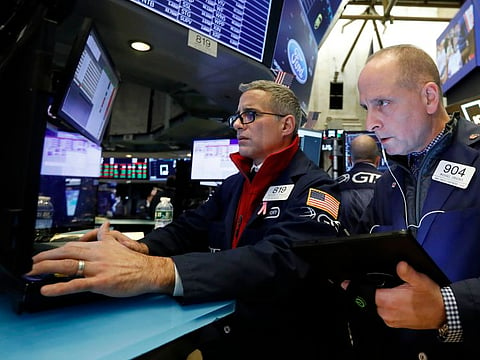A long term prescription for investors
Central banks are gradually losing their ability to influence market moves

The three-day sell-off in US stocks, which has wiped nearly 2 per cent off the value of the S&P 500 Index, is a timely reminder to investors that they need to temper a bias toward short-term optimism with the recognition of unusual uncertainties stemming from the global system.
It also raises interesting questions as to the best tactical response to what I believe will be increased volatility leading up to the 2020 elections, if not beyond. The recent sharp sell-off comes after a significant rally in stocks in which all three major indexes registered one record after another, powered most recently by monthly gains in November of 3 per cent to almost 5.
The re-escalation of trade tension is an almost inevitable consequence of the increased political weaponisation of economic tools in response not just to economic and domestic political objectives but also in some cases to national security and human rights issues. Aggravated by the long-standing nature of genuine grievances, it is a process that will not go away soon.
Indeed, the periodic de-escalation in trade tensions should be treated more as a truce or ceasefire and not as a solid building block for a durable resolution.
Fear of spillover
The weaker-than-expected US manufacturing data pointed to an outright contraction in the sector. Its magnitude was large enough to raise immediate worries about possible adverse spillovers for the economy’s stronger and more dominant service sector. It also served as a vivid reminder of the depth of the global downturn in manufacturing caused by a combination of factors that will be hard to reverse anytime soon.
With these factors constituting large clouds over the global economy well into 2020, if not beyond, a quick resumption in the stock rally depends crucially on strong market confidence in the strength of the continued commitment, willingness and ability of central banks to support asset prices through balance sheet operations and lower interest rates; and the potential for money that has remained on the sideline to enter the market.
This also speaks to tactical portfolio responses to the most recent decline.
Stick with ‘inertia’
With time, I have become less confident about both factors, though not enough to dismiss them entirely.
I have repeatedly argued that prolonged, ever-deeper and sole reliance on unconventional monetary measures risks turning central banks from being part of the solution to becoming an added problem. It’s a risk that is already flashing red in the case of the ECB, where negative yields are slowly but consistently eating away at the longer-term dynamism of the European economy, the integrity of the financial system and its overall stability.
Having said that, I doubt that, when push comes to shove, central banks will resist the temptation to do more in a classic case of what behavioural scientists label “active inertia”. It is also just a matter of time until markets press for more lax financial conditions.
But such a policy response by central banks will continue to prove less effective in promoting economic growth and, if they are not careful, could shift from boosting asset prices to stoking market volatility that could spill over and damage real economic activity.
These factors underpin what I have argued should be an “up in quality” approach to investing ahead of increasingly volatile markets in 2020. Rallies should be used to sell companies with weaker fundamentals (that is, those lacking resilient balance-sheets, solid business models and good management) in favour of both stronger names and cash accumulation.
Sell-offs should be used to add opportunistically to the stronger names, distressed situations trading at bargain prices and more direct access to the healthier parts of the real economy.
With that, portfolios will gradually move away from heavy reliance on index-based investing, which has worked well in a world of quasi-unquestioned market faith in the availability and effectiveness of central bank liquidity injections and ever lower interest rates. And they will favour both more active management and a more bar-belled structure — or what I believe is best to allow long-term investors to retain a claim on the upside while protecting more against the reality of major medium-term uncertainty in the global economic, financial, institutional, political and social spheres.
Sign up for the Daily Briefing
Get the latest news and updates straight to your inbox



